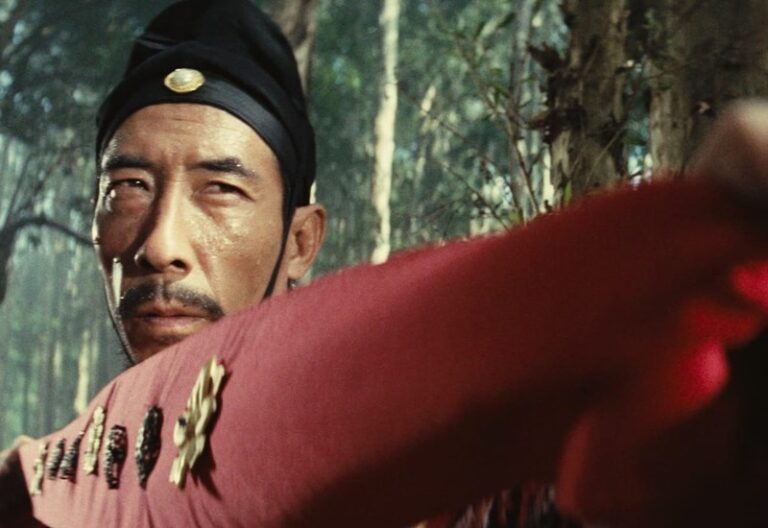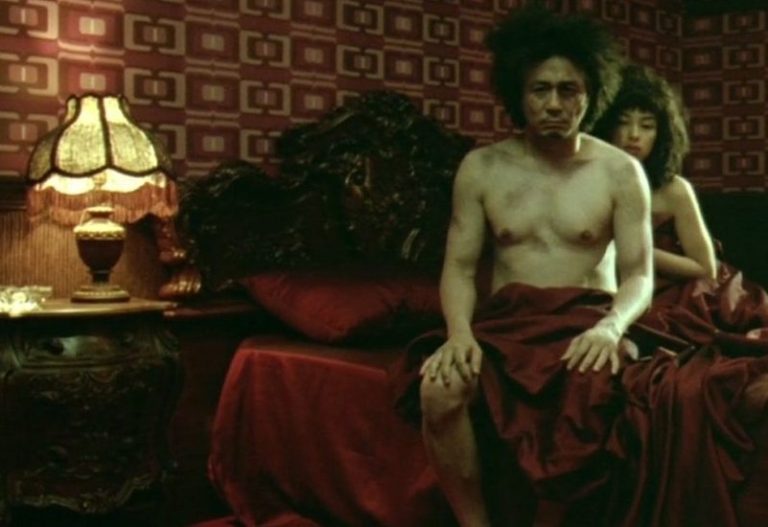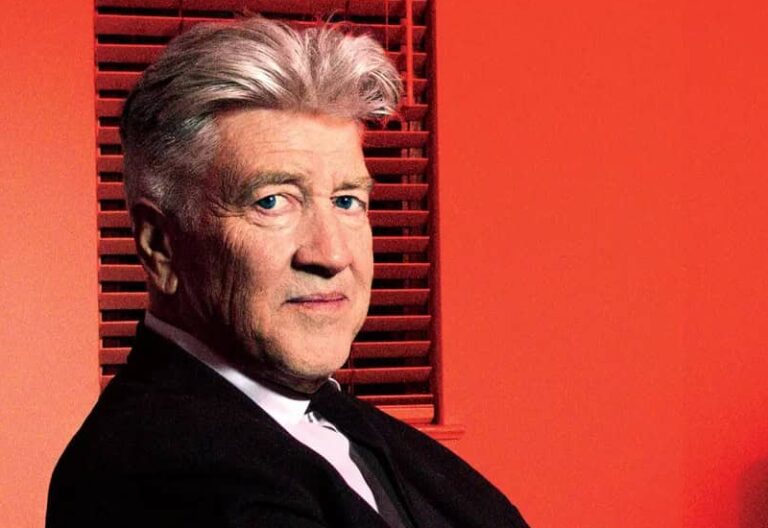hong kong new wave
est. late 1970s – 2000s
Emerging in the late 20th century, a film movement known as the Hong Kong New Wave, originating from the bustling neon streets of Hong Kong, while captivating global audiences with its innovative storytelling, action sequences, and thought-provoking exploration of contemporary social issues.
Published by: CinemaWaves Team | Filed Under: Film Movements
Origins of the
Hong Kong New Wave
The origins of the Hong Kong New Wave can be traced to the late 1970s, a period of rapid modernization and economic growth in Hong Kong. As the city transformed into a major financial hub, its cultural landscape began to shift, leading to the emergence of a new generation of filmmakers eager to explore the complexities of life in this evolving metropolis. Many of these filmmakers were educated abroad or trained in television, which exposed them to global filmmaking techniques and gave them a fresh perspective.
This movement developed within a unique historical context. Hong Kong was still a British colony, but the looming 1997 handover to China weighed heavily on the minds of many, creating a sense of uncertainty and urgency that influenced the themes and tones of the films being produced. The city’s fast-paced, hybrid culture, with its mix of Eastern traditions and Western influences, also played a significant role in shaping its aesthetic. As Hong Kong cinema moved away from the formulaic martial arts and wuxia films that had dominated earlier decades, this new wave sought to reflect the changing social dynamics of the city, dealing with issues like identity, class struggle, and the urban experience.
The movement was influenced by international cinema, particularly the European arthouse films, New Hollywood, and the French New Wave, and was spearheaded by filmmakers such as Tsui Hark, Ann Hui, John Woo, and Wong Kar-wai. These directors were keen on exploring the human condition and the complexities of contemporary Hong Kong society, often focusing on the personal and political struggles of individuals living in a rapidly modernizing city.
Their films resonated both locally and internationally, garnering critical acclaim and opening up Hong Kong cinema to a global audience. All of this marked the beginning of a cultural renaissance in Hong Kong filmmaking that would continue to influence Asian and world cinema for decades to come.

Characteristics of
the Hong Kong New Wave
Filmmakers were known for blending genres, fusing elements of drama, action, comedy and romance. Often, they experimented with visual and narrative techniques. The use of unconventional cinematography, intricate editing, and non-linear narratives became trademarks of the movement.
The Hong Kong New Wave depicted the rapidly changing urban landscape of Hong Kong. Filmmakers embraced a sense of urban realism, portraying the lives of ordinary people against the backdrop of a bustling and evolving city. Many films within the movement engaged with social and political issues. Whether addressing themes of identity, colonialism, cultural clashes or historical injustices, the New Wave served as a reflection of the evolving society.
It also became synonymous with adrenaline-pumping action sequences. Martial arts choreography, led by legendary figures like Bruce Lee, Jackie Chan and Jet Li, set new standards for cinematic combat. These action-packed scenes elevated Hong Kong cinema to global recognition, influencing and forever changing action genre worldwide.


Important Hong Kong New Wave Films and Directors
The Hong Kong New Wave introduced a new generation of filmmakers who played a vital role in shaping the movement. Wong Kar-wai is a defining figure of the Hong Kong New Wave. Films such as “In the Mood for Love” (2000), and “Chungking Express” (1994), are celebrated for their poetic and impressionistic storytelling, exploration of love and longing, and their innovative use of cinematography done by, now famous, Christopher Doyle. “In the Mood for Love,” in particular, is regularly rated as one of the best films ever made or among the best of the 21st century. Wong’s works often blur the line between reality and dream, creating a unique cinematic experience.
Tsui Hark, referred to as the “master of reinvention,” played an instrumental role in redefining Hong Kong cinema with his blend of traditional Chinese storytelling and cutting-edge filmmaking techniques. Known for his work on “Once Upon a Time in China” (1991) and “Green Snake” (1993), Hark revitalized the wuxia genre. His visionary approach, which combined fantasy, martial arts, and historical narratives, helped Hong Kong cinema gain further international recognition.
A master of action cinema, John Woo revolutionized action genre with his stylized violence and operatic storytelling. His films, including “The Killer” (1989), and “Hard Boiled” (1992), introduced the world to the heroic bloodshed genre, characterized by intense gun battles, honor-bound protagonists, and themes of loyalty and sacrifice. Woo’s influential filmmaking style made him a global icon of action cinema.
Ann Hui, another prominent director known today for her socially conscious dramas, with themes of marginalization, identity, and political upheaval in Hong Kong. Her films “Boat People” (1982), and “Summer Snow” (1995), offered poignant reflections on the lives of ordinary people amidst social change.

Legacy and Influence of the Hong Kong New Wave
The Hong Kong New Wave had an immense impact on both Hong Kong cinema and the global film industry. It elevated Hong Kong’s cultural profile on the international stage, attracting audiences and filmmakers alike with its innovative storytelling and cinematic flair.
The success of the New Wave films at international film festivals and box offices helped to establish Hong Kong as a major hub for East Asian cinema. It inspired filmmakers around the world with its bold storytelling, dynamic visuals, and genre-bending techniques. Directors such as Sofia Coppola and Quentin Tarantino, Wong Kar-wai’s self-proclaimed fan, and many others have cited Hong Kong New Wave films as influential in shaping their own cinematic styles.
In Hong Kong, the legacy of this New Wave still resonate in the contemporary cinema. Filmmakers continue to explore themes of identity, social change, and artistic experimentation, building on the foundation laid by these pioneering directors. Today, the movement’s spirit lives on, ensuring that the Hong Kong New Wave remains a vital force in the evolution of cinema.
Refer to the Listed Films for the recommended works associated with the movement. Also, check out the rest of the Film Movements on our website.
Or La Nouvelle Vague, is one of the most iconic and influential film movements in the history of cinema. Emerging in the late 1950s and flourishing throughout the 1960s…
Wuxia, meaning chivalrous hero, refers to a genre of Chinese fiction and film that follows martial artists upholding justice in ancient China. Though deeply rooted in classical…
Taiwan New Wave, also known as Taiwan New Cinema, was a film movement that flourished during the 1980s and 1990s. It gained international acclaim for its exploration of complex…
The Korean New Wave is a transformative period in South Korean cinema that not only captivated audiences at home but also gained international acclaim. Marked by…
Arthouse film refers to a category of cinema known for its artistic and experimental nature, usually produced outside the major film studio system. These films prioritize artistic…
Auteur theory is a critical framework in film studies that views the director as the primary creative force behind a film, often likened to an “author” of a book. This theory suggests…






